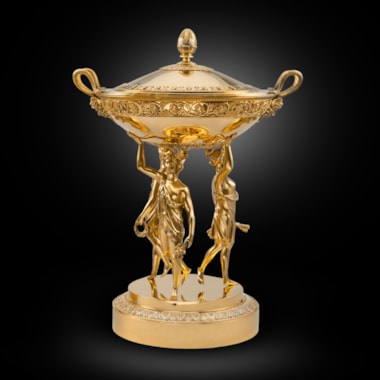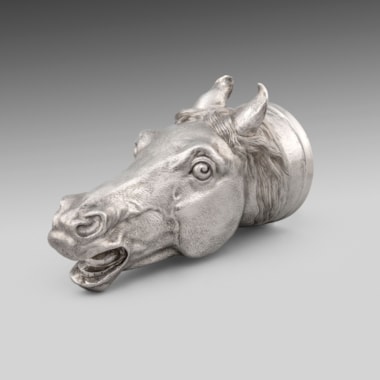Of German origins, but of solid diffusion in the late 18th and 19th century, antique silver stirrup cups are a drinking vessel presented to riders on horseback prior to leaving or arriving home from a hunt; this happened whilst their feet remained in their stirrups, hence the fascinating name.
Because of their small capacity and the absence of a base and of a handle, stirrup cups were exceptionally comfortable to be held while riding.
Early stirrup cups were essentially wine glasses without a base. However, their popularity grew, and the stirrup cups started to be crafted in shapes relevant to the hunt, such as a hound or fox head.
The firm of Edward Barnard & Sons (otherwise known as the Barnard Brothers) is quite possibly the oldest silversmithing company in the world, its origins can be traced back to Anthony Nelme (d. 1722) who established his firm in London circa 1680. Through succession and proceeding partnerships the firm was amalgamated in 1786 by Charles Wright with neighbouring silversmith Thomas Chawner who, at the time, was master of Edward Barnard – Chawner made Edward Barnard the foreman of the company. In 1796 Chawner took an engraver, John Emes, into partnership and when he retired Emes became the sole owner and Edward Barnard became the firm's manager. On Emes' death in 1808 Edward Barnard went into partnership with the widowed Rebecca Emes and Henry Chawner; the firm now trading as Emes & Barnard. After Rebecca Emes’ withdrawal from the business in 1829, Edward Barnard became the proprietor together with his sons, Edward, John, and William, trading under the name Edward Barnard & Sons.
Edward Barnard & Sons skill, knowledge and adeptness in both the Neoclassical and Rococo styles ensured their longevity as a firm, represented by fine quality silver. The company’s clients included Rundell, Bridge and Rundell, Elkington & Co., and the Goldsmiths’ Company. After many relocations of premises and centuries of trading, the firm eventually closed in 2003.
You May Also Like








































































